Everything You Need To Know About 3D Laser Scanning in Construction
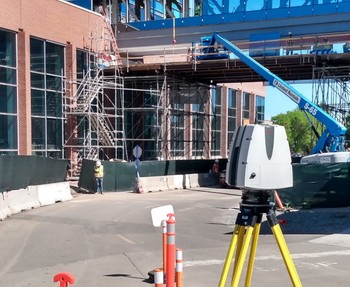
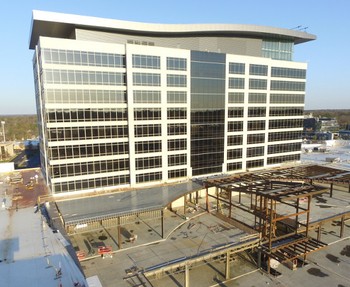
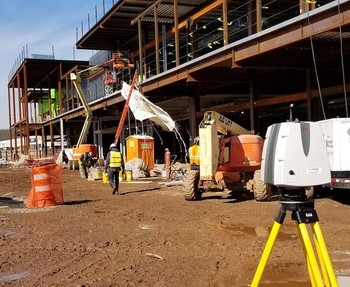
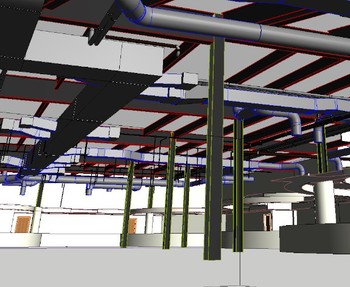
Are you using 3D laser scanning on your construction projects? Every construction professional would benefit from learning the advantages of 3D laser scanning buildings or construction sites. Many construction projects lack current records or as built drawings. This information is critical for construction planning because it helps engineers to expedite design planning using the real-world building data as a foundation.
Understanding how 3D laser scanning can benefit your construction business is an important step in improving overall efficiency and profitability, whether you’re embarking on a new build, a renovation or facility maintenance. As built laser scanning allows you to gather accurate, detailed information about existing site conditions. Data is collected in a point cloud, a database of millions of points in a 3D coordinate system. Accurate to within 2mm-4mm, this is a precise digital record of a building or site.
The History of 3D Laser Scanning in Construction
3D laser scanning technology was created in the 1960’s. The early scanners used lights, cameras and projectors. Due to limitations of the equipment, it often took a lot of time and effort to scan objects accurately. In the 1980’s, LiDAR scanners for construction captured three-dimensional data points from existing architecture. In the 1990’s, 3D laser scanning began being utilized for design and engineering purposes. CAD software allows engineers to convert the point cloud to 2D drawings and 3D models.
How is Laser Scanning Used in Construction?
How is laser scanning used in construction today? Originally, a 3D laser scanning survey was used in the construction and maintenance of industrial plant facilities. Laser scanning has since been adopted for many other uses, including design, construction, renovations and so much more.
- Design: Laser scanning is the best way to begin design planning. Construction engineers can utilize a scan-to-BIM method to capture detailed site information. Building information modeling (BIM) gives engineers, architects and contractors the opportunity to design the details of a building virtually. It accelerates design planning and reduces miscalculations, change orders and material waste. Buildings that begin with BIM are often built with great efficiency.
- Construction: Laser scanning provides advantages for construction coordination, specifically in avoiding conflicts between different systems, such as HVAC, electrical, and plumbing. Data can be shared to help with remote coordination. 3D building scanning services aren’t just performed at the beginning of a project either; they can be done at various other points along the timeline to better document construction progress, reduce change orders and share work to other trade professionals. Laser scanning in construction can also document errors and identify a faster solution. 3D laser scanning expedites prefabrication by documenting existing structural elements to plan for modifications.
- Renovations, Operations and Retrofits: 3D building scanners capture a very high level of detail, and this helps create a permanent as-built record for both owners and facility managers. This data can help with building operations, modifications, renovations and future building additions.
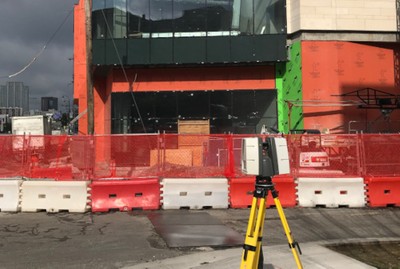
As built laser scanning allows you to gather accurate, detailed information about existing site conditions.
Benefits of Laser Scanning in Construction
What are the benefits of 3D laser scanning for construction? There are many benefits to using laser scanning services on your next construction project.
- Fast, Accurate Data Collection: A single laser scan captures millions of 3D data points per second, providing incredibly rich detail of a building or project site. Datasets are dimensionally accurate, measurable and shareable, expediting project planning and execution.
- Eliminates Revisits and Disruption: Sites are captured in high detail the first time, eliminating the need for return visits. High speed data collection expedites projects that require minimal disruption.
- Reduces Costs and Change Orders: Accurate design plans are produced from the start expediting field work and reducing change orders, delays and costs.
- Safe and Non-Contact: 3D laser scanners collect data on tripods from a distance in hard to reach or hazardous locations, keeping workers out of harm’s way. The non-intrusive nature keeps historic sites and artifacts untouched.
- Improves Communication: Communication is improved, teams can discuss plans while each has access to the same information, creating a more dynamic working environment.
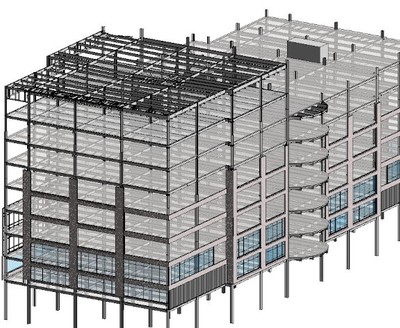
With a 3D Revit model, accurate design plans are produced from the start -- reducing change orders, delays and costs.
How to Implement Laser Scanning in Construction
Here are a few tips to get started:
- Start with laser scanning: When it comes to utilizing 3D laser scanning on your projects, the earlier you implement it, the better. Ensuring the highest level of accuracy starts with 3d laser scanning right from the project start.
- Choose to buy, rent or use a service: Many general contractors outsource laser scanning to service providers that specialize in this capability. Some firms are choosing to self-perform laser scanning either by renting or purchasing their own laser scanner and software. The technology is not cheap, it might make more sense to use a service and see the value before investing in the equipment and software.
- Prepare the right information: Preparing the right information before you request a quote for laser scanning services can bring huge benefits. Tell your 3D laser scanning service provider everything they need to know about your project up front and you will speed up the quoting process, streamline the work, and save yourself a lot of time and money.
- Use CAD software: Don’t just think of laser scanning in construction as the final deliverable — be sure to use it simultaneously with survey scanning software for your projects. It works hand-in-hand with BIM and can be used to create a more detailed and accurate BIM models.
Learning from the Best
TruePoint has helped thousands of companies implement 3D laser scanning into their construction projects. Our team's expertise and attention to detail delivers accurate site data and intelligent models for every project. Here are a few examples of our recent 3D laser scanning services:
- Historical Church: One of the oldest standing buildings in Austin suffered damages during a winter storm and was in need of renovation. No as built documentation existed for this 3-story church. 19,000 sq ft was scanned with the Leica RTC360 laser scanner. In 149 scans, every detail was measured and documented. An LOD 200 Revit 3D model was delivered to the client.
- Olympia Fields Country Club: The Olympia Fields Clubhouse was 3D scanned for renovation. This is the largest private clubhouse in the world with an 80 ft, four-faced clock tower. With most of the clubhouse dating back to the early 1900's, the lead architect required up-to-date as builts, a BIM model and 2D CAD drawings to begin design planning.
- Tool Manufacturing Facility: 425,000 sq ft of space was 3D laser scanned to capture as built site data for an upcoming project at a tool manufacturing facility. A registered point cloud was converted to a LOD 300 Revit model and 2D CAD plans. In two weeks on site, taking 2,192 laser scans, two project managers captured every structural and MEP detail.
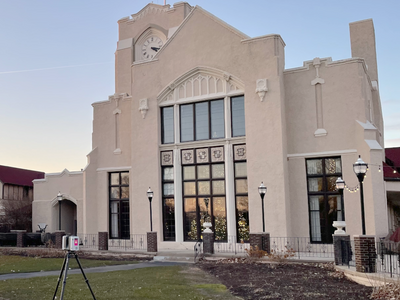
The architect on the Olympia Fields Clubhouse renovation required an up-to-date BIM model and 2D CAD drawings to begin design planning.
Laser scanning is quickly becoming the first step in construction projects. If you’re not already using it, now is the time to start looking into bringing the technology to your projects. The technology is transforming the way contractors work. By replacing manual processes and allowing software to capture and share information throughout the organization, construction companies are able to focus on delivering the project on time and under budget.
With accurate project information, you can:
- Boost efficiency and productivity
- Communicate more effectively between field and office
- Avoid rework that can derail budgets and schedules
3D laser scanning is revolutionizing construction workflows, and companies are turning to TruePoint to provide as-built services to plan and expedite projects.
If you’re considering laser scanning and need help answering any questions or determining if laser scanning is right for you, contact us at 419-843-7226 or email info@truepointscanning.com and our team can assess your needs and help you determine your best course of action.

